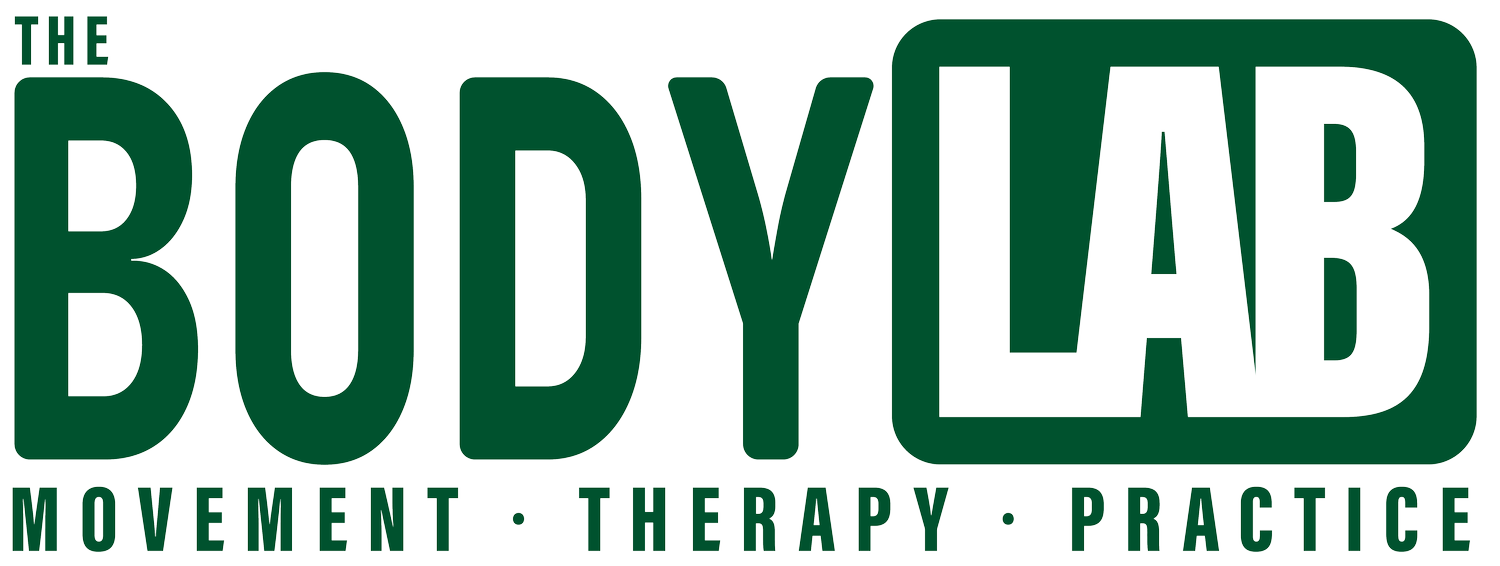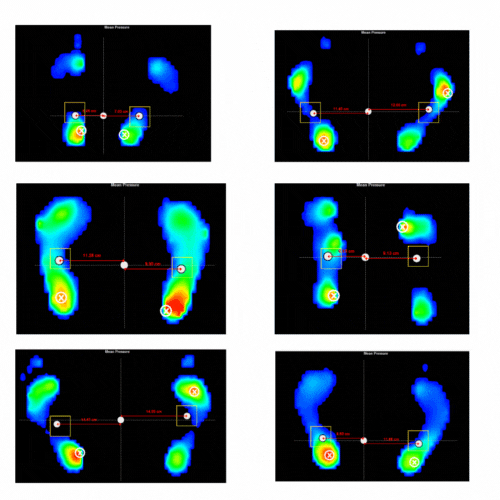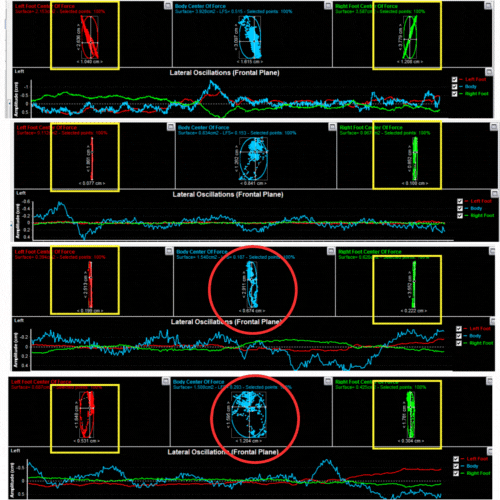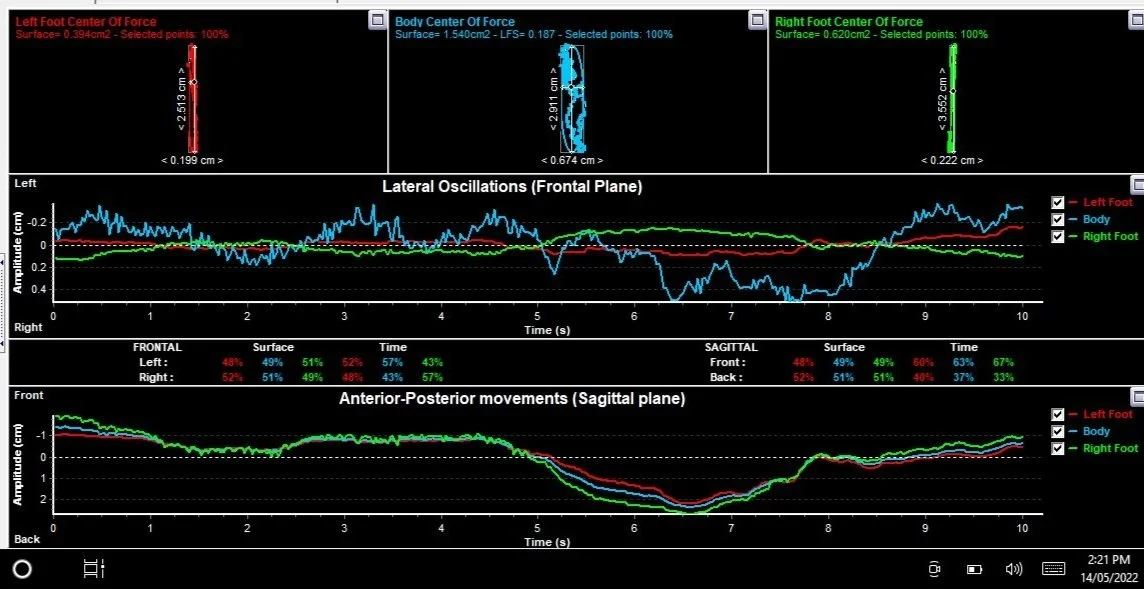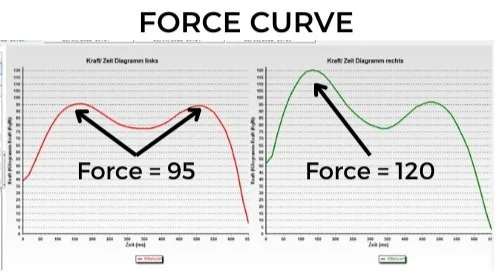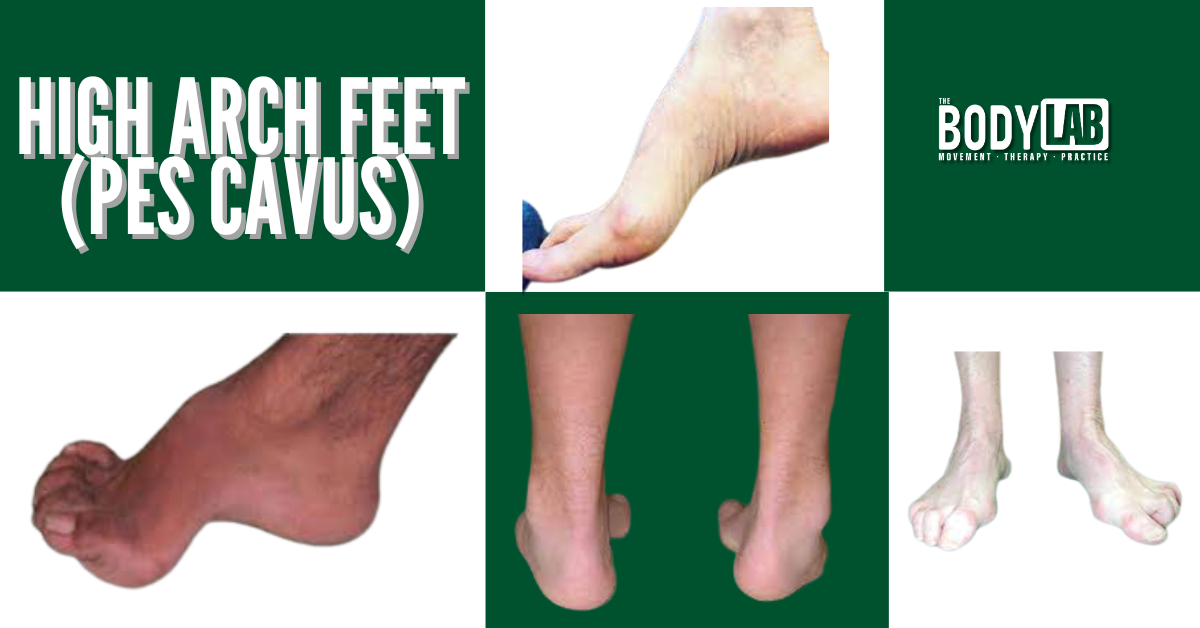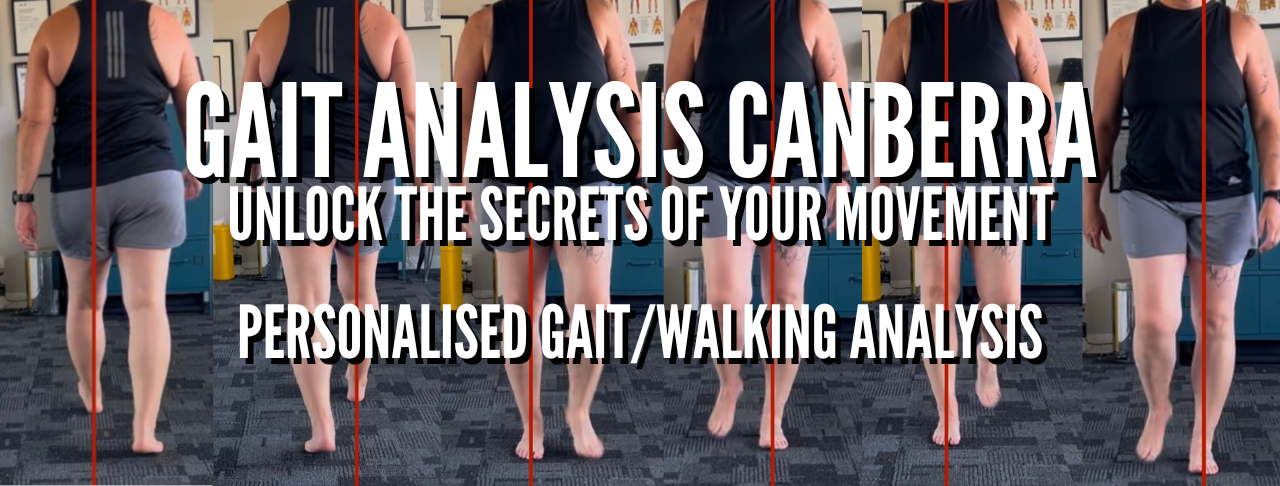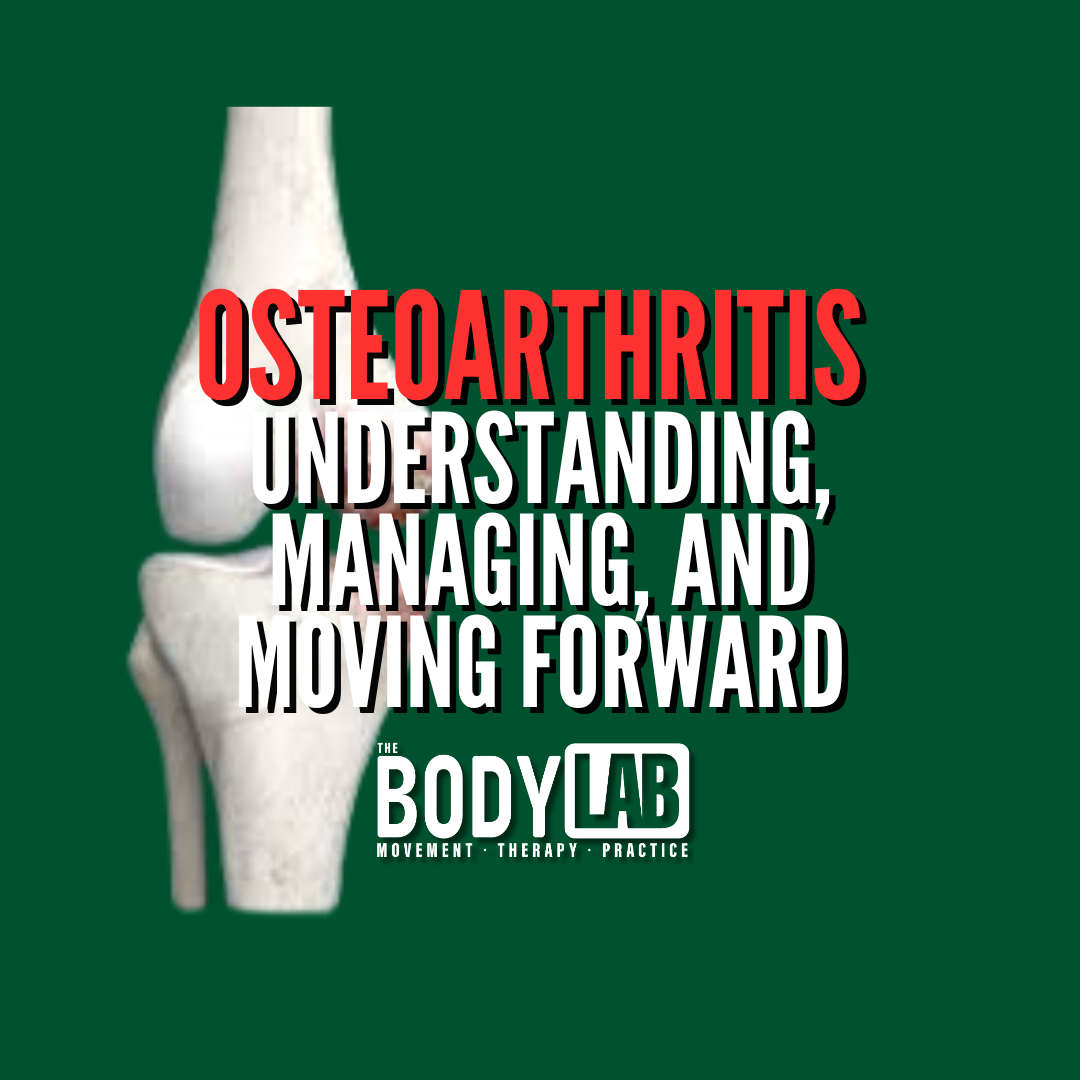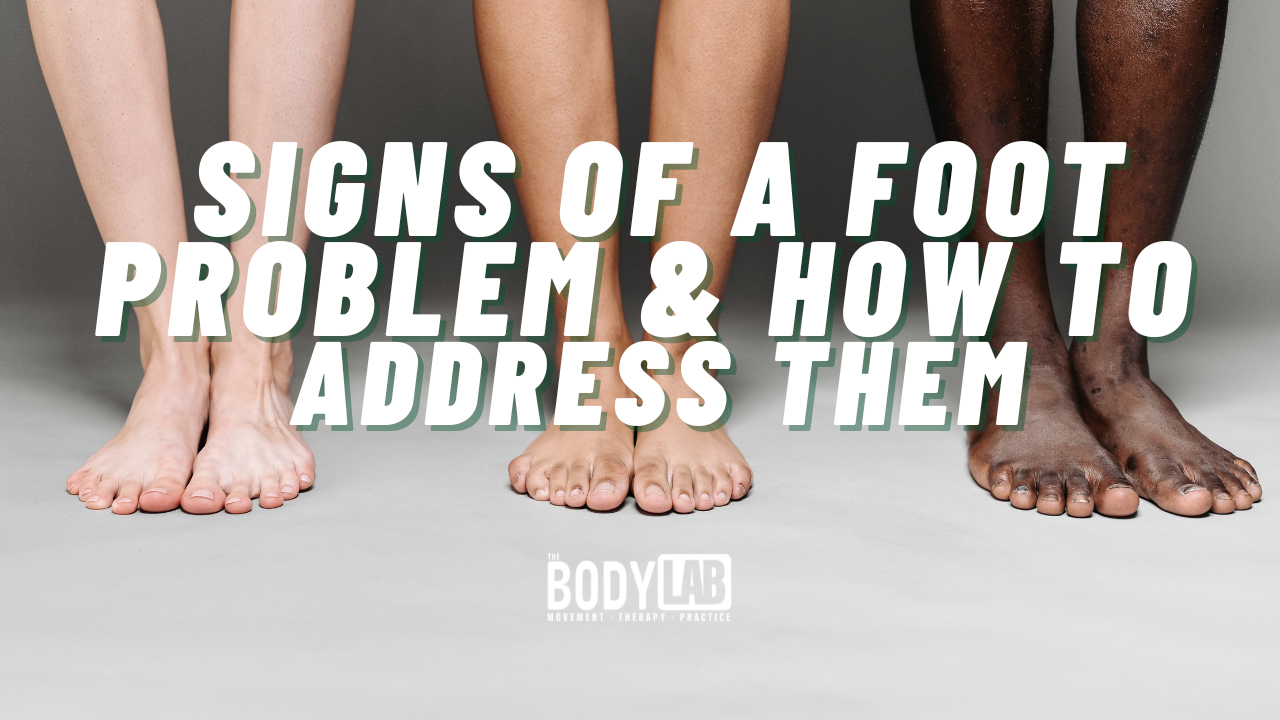Pressure Plate Analysis - What the Podiatrist doesn’t tell you.
I am the only therapist in Canberra to use a pressure plate, and I’ve been incorporating this advanced tool in my clinic for over 6 years. It’s a highly effective device that shows my clients exactly where pressure is being applied on their feet while they stand and walk. But what is a pressure plate, how does it work, and how can it help you move better, improve stability, and reduce discomfort? This article will explain what a pressure plate is, how it works to measure foot mechanics, and why it can be such a valuable tool for your overall health and movement.
Pressure Plate Analysis
The Amcube pressure plate is commonly used by podiatrists to analyse your feet and prescribe orthotic devices. This plate helps them understand how your feet work, their timing, movement, imbalance, and pressure while standing or walking. The plantar pressure plate assesses how you stand, move, and stay balanced. It helps me understand what your body as a whole needs, not just your feet, because your feet’s pressure shows where your body's centre of mass is in contact with the ground.
Feet pressure represents the centre of mass on the ground.
Measurements
The plate can measure your feet in two ways - Static analysis as you stand over the plate and dynamics as you walk over the plate.
Static Measurements
When you stand on the plate with both feet, it measures how the pressure is distributed in each foot. This gives the therapist an idea of how your feet support your body weight. The image on the right shows different analyses of foot pressure and the differences between each pair of feet. The colour range is from blue to green and yellow to red, indicating the level of pressure in different areas of the foot. Blue to green means less pressure, while yellow to red means more pressure. Black means no pressure.
A therapist can use this information to find your centre of mass, which tells us about your stability and upper body movement. It also gives us detailed info about the pressure and centre of pressure in each foot.
Centre of Pressure
Each person's feet are unique and the way their body is positioned over each foot is also unique. The left image shows the centre of pressure (marked by a red circle) and the centre of pressure in each foot (marked by a yellow square). This represents the overall pressure of the body on the ground, which corresponds to the body's centre of mass. There is a connection between these two areas of the body. If your body weight is unevenly distributed over one foot compared to the other, then more weight will be placed on that foot.
A therapist can use this information to check if your pelvis or spine is rotating. The centre of pressure should be the same location in both feet. If it's more forward or backward, it could mean there is a rotation the pelvis or upper body. This is shown by the dot in the centre between your feet on the image.
Stabilometry (Posturology)
Another static assessment that the pressure plate can provide is stabilometry or posturology, how stable are you. This analysis gives information about your balance (center of mass) within each foot, as well as with your spine or pelvis. The right image shows where the force goes and how you react to it. Blue represents your spine or pelvis, red represents your left foot, and green represents your right foot.
The blue diagram shows how your body moves and balances when you stand still. It represents your center of mass, which is constantly adjusting to keep you stable. The blue dots on the diagram indicate where your body is most balanced and shows your nervous system's preference for stability. The yellow squares on the diagram represent the movement of your feet and show whether your feet tend to be more mobile or stable.
A longer shape creates more force moving front and back, but not sideways. Conversely, a broader shape creates more force sideways, but may not handle front and back motion. A longer oval shape in foot analysis may indicates an unstable or high-arched foot, while a wide foot may indicates flat feet.
A therapist can use this information to understand where your body weight is constantly shifting and reveal any hidden preferences or areas that you avoid, such as experiencing hip pain on one side. The size of the circles, which represent the width and length of your movability, gives the therapist an idea of how well your feet can adjust and reflects the wider implications of your body's stability and ability to move.
Dynamic Measurements
The pressure plate can determine how pressure is spread in your feet while walking. This measurement is crucial for analysing your feet and body in ways that aren't visible. Dynamic analysis offers 5 various measurements.
1. Visual foot mapping
Shows how a foot moves on the ground while walking. Different colours show how much pressure is generated during each step of walking. The colours range from light blue, green, yellow to red, indicating the amount of force used. Light blue means low pressure, while red means high pressure.
This helps the therapist understand how the foot is working and performing, and shows areas where there is more or less pressure. It also provides a guide for any areas that need extra attention.
2. Walking Line
This represents how weight is distributed while you walk, showing the centre of mass line (white line). This measurement helps determine how weight (force) is distributed as you walk. A therapist should compare each foot to each other and to a typical walking pattern.
This tells the therapist if your foot can handle and soak up the pressure as you walk in the right spots on your foot. If the line goes too far inside or outside the usual line, then your foot is either stuck rolling inward or rolling outward.
3. Maximum Force (pressure) line.
This shows where force is concentrated in your foot while walking. It's different from the gait line because it shows the greatest pressure point in your foot, instead of the centre of mass. Ideally, the two lines should be close together. The farther apart they are, the more effort your body is making to stay balanced and stable.
This tells the therapist how hard the nervous system must to work to keep the foot and body stable. The further the purple line moves from the white line (centre of mass), the more unstable the person is.
4. Velocity of the centre of pressure.
This measures how quickly or slowly your body's centre of mass moves through your foot. It can show areas in your body that struggle to move.
This lets the therapist know if there are any joint blockages in the foot and body. Speed directly affects how well you can move and any problems you may have with function.
5. Force Curve (Peak pressure moment)
This measures the peak moment of maximum force in your feet as you walk. The amount of force is dictated by the amount mobility of your feet and entire body. In essence the entire body is like a elastic band, absorbing energy as you walk then returning that energy to move you forward as momentum. The two peaks shown should be equal in terms of force
This lets the therapist know how efficient your entire body is working. The amount of force generated as you walk should be equal dispersed and returned to the body. The image of the force curve display more force on the right foot (green curves) then left (red curves) and may represent more body mass on the right side of the body as someone walks.
Conditions we treat using the force plate
The force plate is a useful tool that helps us diagnose conditions and make treatment decisions for our patients.
We regularly use the force plate to help treat many common conditions such as:
Heel Pain
Heel pain on the force plate is usually caused by high pressure on the inner side of the heel. The pain usually comes from plantar fasciopathy (or plantar fasciitis), specifically on this part of the heel bone. When walking, if your foot rolls inward or is rotated outward, it can put extra pressure on the inner part of the heel bone.
Based on the information we have, the treatment plan might involve suggesting specific exercises to self mobilise the joints and tailing exercises to strengthen muscles. We can also use data from the force plate to help us make these decisions. In addition, we may use other treatments like acupuncture or soft tissue therapy at the same time to quickly reduce pain.
Forefoot Pain
Forefoot pain is another condition we see often in the clinic. This type of pain can range from:
Neuromas
Bunions
Bursitis
Plantar Fasciitis
I often see pictures with pressure under specific foot areas like the 4th and 5th toes for Neuromas. This can mean more weight on that spot, which can make any of the mentioned conditions worse. It can also help explain why people get corns or calluses, since those form in high-pressure spots.
Using technology to Guide our Treatment
The force plate is a useful tool that therapists use to figure out your condition and why it's happening. This technology helps us understand what's going on in your foot, which may be hard to see without it. The force plate is useful for assessing foot mobility and stability. It also can aid in determining appropriate strength training. Weak calves are often identified by observing an imbalance on the force plate, such as an excessive presence of smaller toes compared to the big toe. This indicates that the calf muscles are not sufficiently strong to support you during walking, as other muscles responsible for pushing the foot downwards are compensating.
